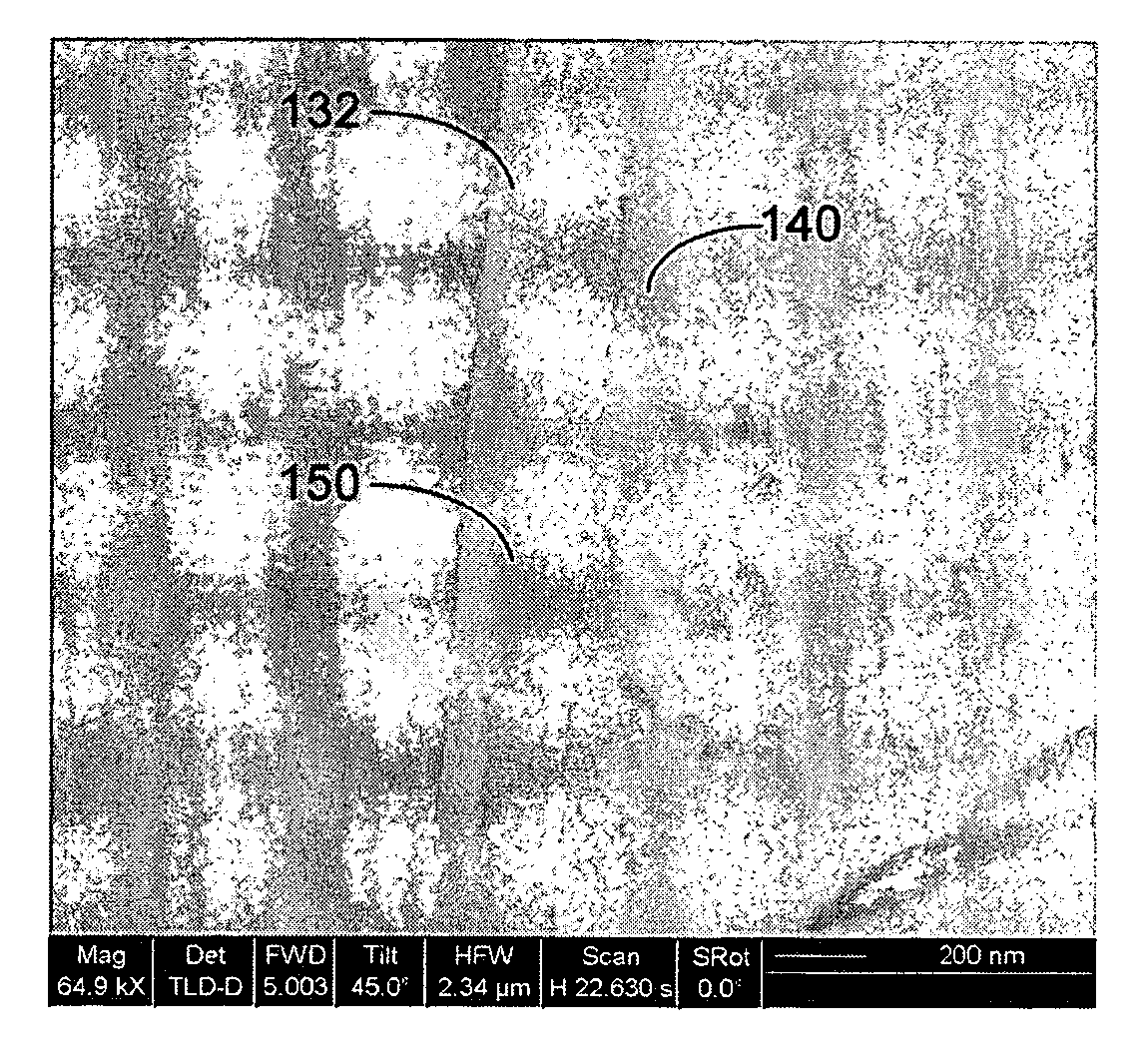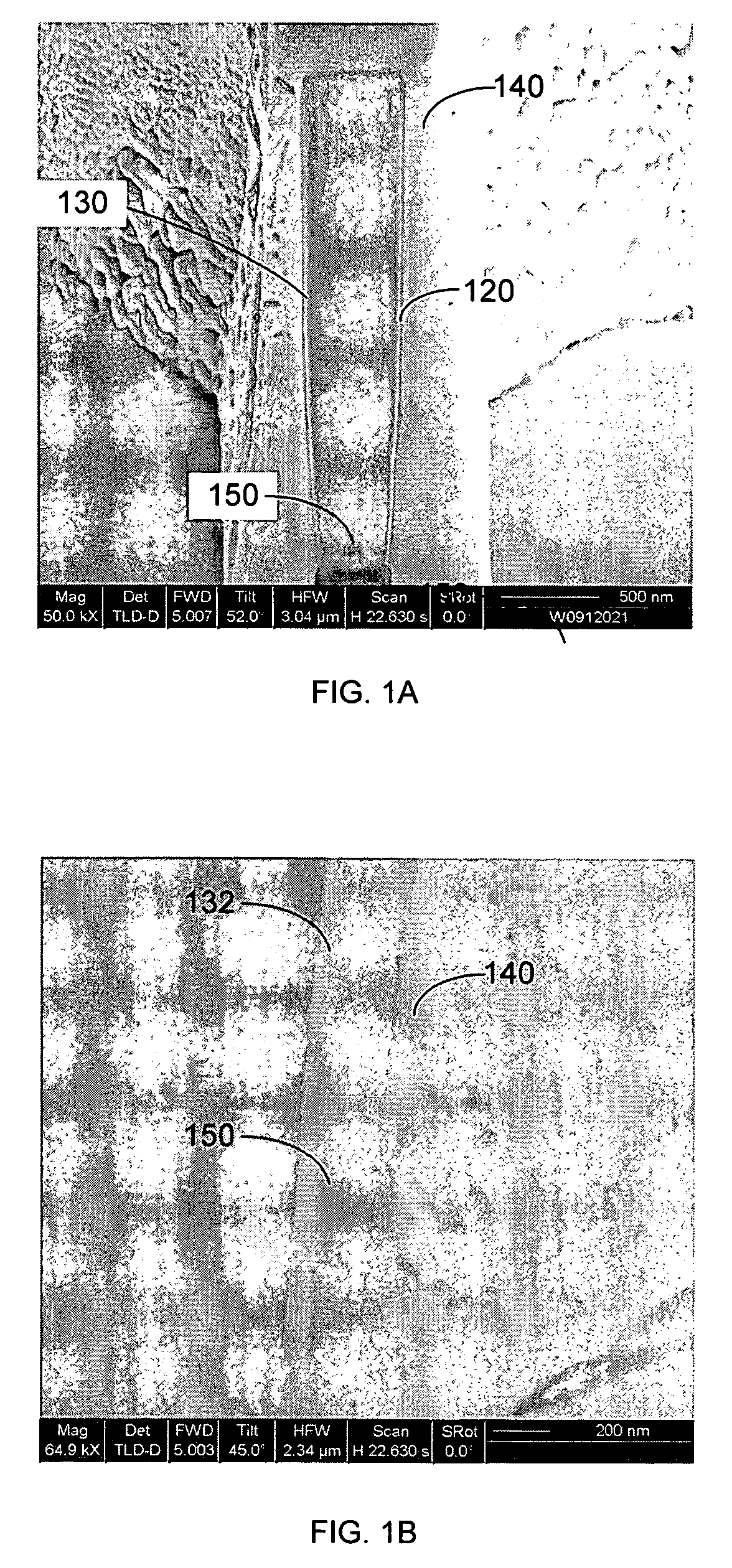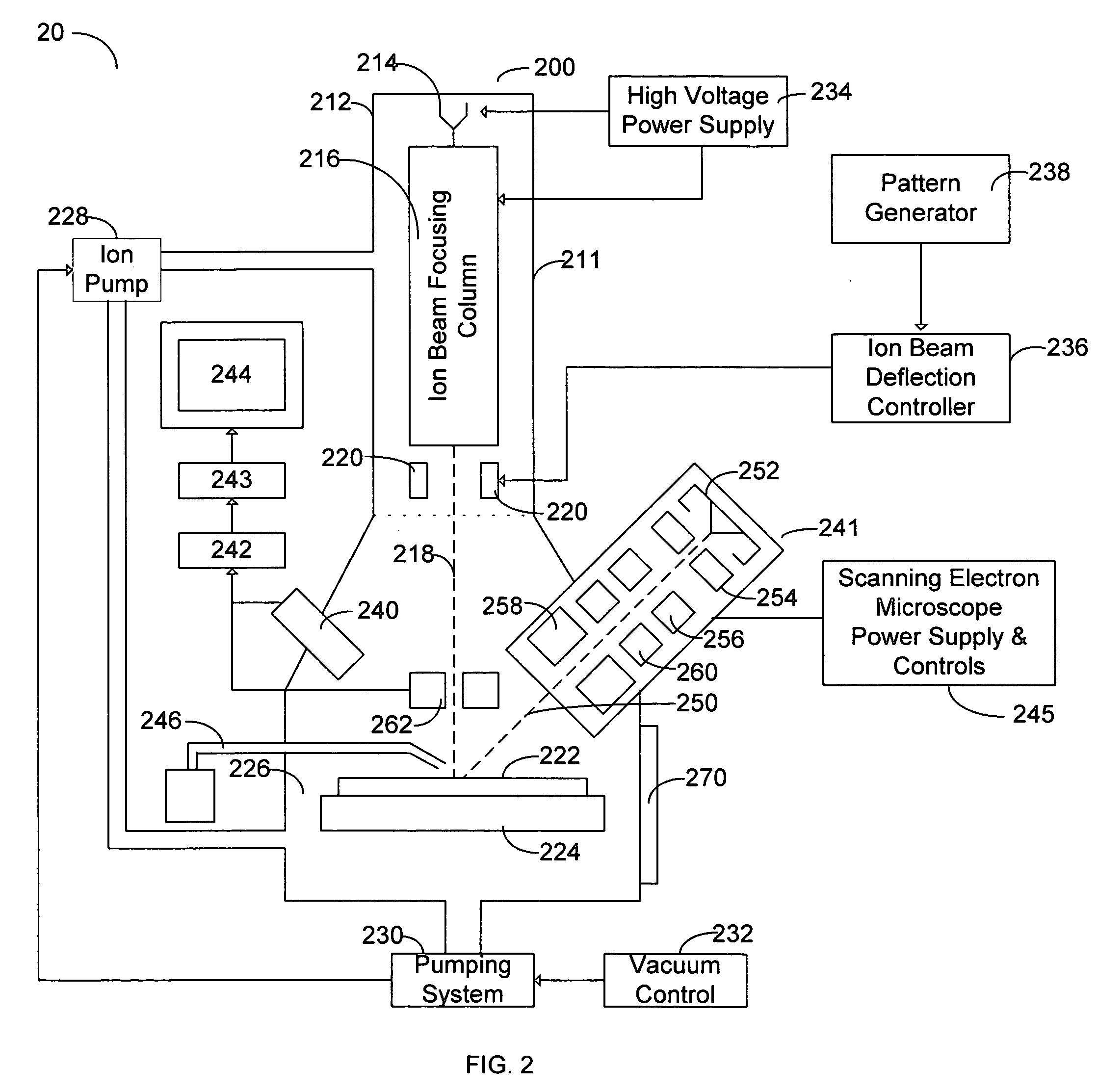Method and apparatus for controlling topological variation on a milled cross-section of a structure
a topological variation and cross-section technology, applied in the field of topological variation control on a cross-section of a structure, can solve the problems of less accurate cross-section measurement by automated metrology software, less accurate width determination, and difficult edge recognition, so as to improve the accuracy of metrology applications, reduce topological variation on a cross-section, and improve the control of topological variation.
- Summary
- Abstract
- Description
- Claims
- Application Information
AI Technical Summary
Benefits of technology
Problems solved by technology
Method used
Image
Examples
Embodiment Construction
[0032] Preferred embodiments of the present invention are directed to methods and an apparatus for controlling topographic features or variations on a milled cross-section of a structure. The topographic features that can result from milling the cross-section can be reduced or even eliminated by careful matching of the substrate (the material that the feature is composed of) with a protective overcoat material. Specifically, an appropriate overcoat material according to the invention will have a mill rate at higher incidence angles (up to 90 degrees) that closely approximates the mill rate of the substrate material at those higher incidence anglesat which the milling cross section is formed. Preferred embodiments of the present invention can thus be used to produce a cross-section face that is almost perfectly planar. This allows for SEM metrology based entirely upon material differences rather than variations in topography, which is desirable for metrology on a structure. In contra...
PUM
| Property | Measurement | Unit |
|---|---|---|
| Angle | aaaaa | aaaaa |
| Angle | aaaaa | aaaaa |
| Angle | aaaaa | aaaaa |
Abstract
Description
Claims
Application Information
 Login to View More
Login to View More - R&D
- Intellectual Property
- Life Sciences
- Materials
- Tech Scout
- Unparalleled Data Quality
- Higher Quality Content
- 60% Fewer Hallucinations
Browse by: Latest US Patents, China's latest patents, Technical Efficacy Thesaurus, Application Domain, Technology Topic, Popular Technical Reports.
© 2025 PatSnap. All rights reserved.Legal|Privacy policy|Modern Slavery Act Transparency Statement|Sitemap|About US| Contact US: help@patsnap.com



